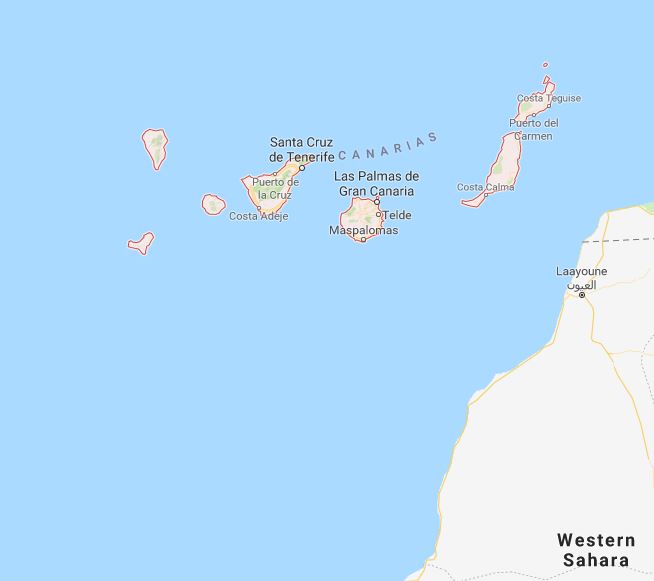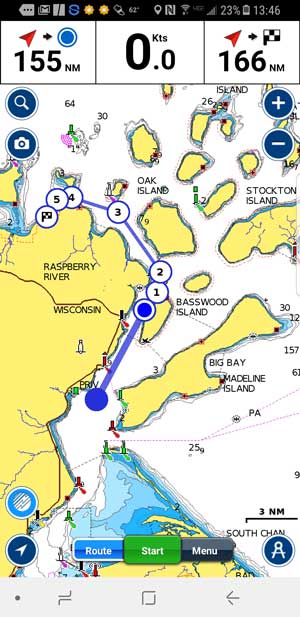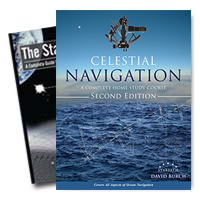Curriculum Development
A great deal of curriculum development has been going at Northern Breezes Sailing School over the past year which is mostly independent of American Sailing Association efforts. Courses which have been refined, reworked and updated include: Weather for Mariners, Coastal Navigation, Electronic Navigation which grew out of Coastal Navigation and Celestial Navigation.
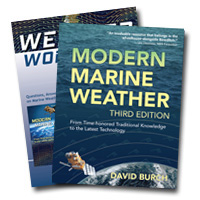
Weather
David Burch, author of Weather for Mariners textbook which we use, has substantially revised the book adding many colorful diagrams and online resources. Captain Tony Green remains our primary Weather for Mariners instructor. Although all of our instructors at the Captain level are pretty good with practical application of weather information. This includes Captain Vicki Staudte, Captain Gerry Shimek, Captain Jack Masterson, Captain Nick Ostrem, Captain Guy Wray, Captain Dale Fitch, Captain Perry Phillips and Captain Jon Burns who are our most active Captains right now. David Burch’s textbook and associated workbook problems will give most students a lot of room to grow in their use of weather tools which are readily available from NOAA including their GFS (Global Forecast System) model. This is primarily where the weather forecasters, most of whom read their teleprompters quite well but often fail to look out the window, get their data.
According to Paul Huttner, one of my favorite sources who publishes the “Updraft” blog on Minnesota Public Radio, all meteorologists believe that global warming is severely affecting our weather. We believe so as well. The meaning of this to a sailor is that often our weather is more extreme which can have severe effects on our sailing locales, destinations and even our overnight anchorages. Is that a dark cloud? Or, is it boiling as well? All sailors should get Weather for Mariners dialed into their backgrounds and use these principals often. This will help you interpret and play weather windows in reasonable, coherent ways which help keep you safe while confidently enjoying our great passion of sailing.
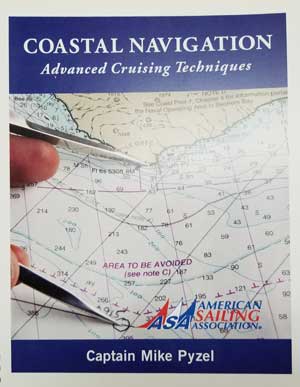
Coastal Navigation. Captain Mike Pyzel, author of Coastal Navigation – Advanced Cruising Techniques, and the textbook’s Editor, Captain Thom Burns, Northern Breezes Sailing, are working on some revisions which will take the old 1210 TR (Training Chart) out of the course. The main problems with the 1210 TR chart are all the Loran lines which are on the chart, but which are no longer used and the age of the chart data. The net effect is a confusing training chart, according to Burns. We’ve already added extra problems to the course and now include a separate PDF piece addressing Tide and Current issues.
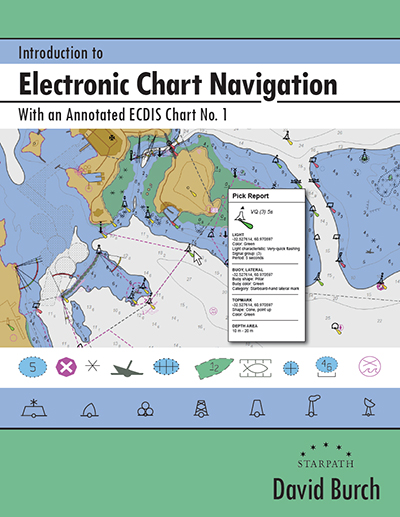
.
Captain Thom Burns used to try and add critical Electronic Navigation topics to the Coastal Navigation, ASA 105 course. Electronic Navigation topics and systems change so fast and take enough teaching time according to Burns that he decided to develop an independent course.
It is one of the fastest growing courses at Northern Breezes. It takes one Saturday or two weeknights. It also requires almost a total review of the programs and literature by the instructor each time Electronic Navigation is offered. The goal of this course is to help charterers and boat owners become navigationally independent of any installed system on any boat they may charter. This creates the safety of redundant navigation systems. The Electronic Navigation programs presented in this class are often at very low cost and are used on devices which most sailors already own and are carrying around with them.
Captain Thom Burns working in his role on the American Sailing Association Standards and Development Committee worked with David Burch, Starpath Navigation, to redesign both the textbook and instructor qualification process for Celestial Navigation. Northern Breezes Sailing, Captains Tony Green and Thom Burns, were the teaching test platform for Basic Celestial Navigation, ASA 117 and Celestial Navigation, ASA 107 using the Burch materials. Now, the revised textbooks for both courses which have been used for the past two years by Northern Breezes Sailing are one of the standard options for the American Sailing Association nationally. Northern Breezes Sailing has been using Celestial Navigation, by David Burch for correspondence/online training for ten years. “I know the quality and thoroughness of these materials,” noted Burns.
Electronic Navigation and the tremendous tools which go with it have replaced for most Cruisers the need for Celestial Navigation with a sextant. However, there is some resurgence in Celestial Navigation worldwide. The rebirth in 2018 of the Golden Globe Around the World Race (GGR) which marked the 50th anniversary of the original 1968/1969 version was one of these events. Celestial Navigation is the only form of Navigation allowed under the rules of the GGR. The idea is to compete with the equipment available for the first Golden Globe fifty years ago. Nabil Amir, a Northern Breezes’ graduate in both Coastal and Celestial Navigation, competed in this year’s Golden Globe Race. Nabil, an American born Palestinian, represented Palestine.
“I think this Golden Globe Race is a wonderful idea. Why dream of it and never do it. This is a challenge that has been created to achieve that dream.” Sir Robin Knox-Johnston
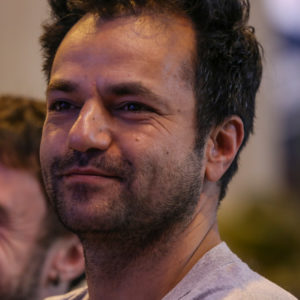
Nabil Amra is an American born Palestinian who works as a foreign exchange trader in Minneapolis, Minnesota. He purchased a ketch rigged version of the Biscay 36 class yacht built by the Falmouth Boat Company named Elle May which he returned to the builder to have her prepared for the GGR.
In 2015, he sailed a catamaran with a friend across the Caribbean and through the Panama Canal. “The effect on me was so profound that I began to look for a blue-water boat of my own and bought a Contessa 32 class yacht based in St. Maarten.
He says of the GGR: “My saltwater journey is just beginning! I’m preparing to start a new chapter in my life that has more to do with adventure. The Golden Globe Race came along at just the right time to turn an incessant daydream into reality. My eagerness is to sail under the Palestinian flag and to represent these forlorn people who have had little to be cheery about for a long time.”
Nabil Amra’s Elle May was the last of the Biscay 36 class yachts to be built by the Falmouth Boat Company in 1990. Initially, he and fellow skipper Antoine Cousot formed an alliance to prepare their two Biscay 36 yachts alongside each other, but work on the first one bought started, Viscaya, (now re-named Goldstar) which was built in 1975. The two competitors joined forces to prepare their Alan Hill designed yachts but work on Elle May was delayed and she was not expected to be launched until April 2018.
To Get a Feel for the GGR Commitment and Efforts both Personal and Family, Read These Highlights from and about Nabil Amra.
April 5th, 2018 12:00 AM. US/Palestinian Nabil Amra reports that work has now resumed at the Falmouth Boat Company to complete his Biscay 36, Elle May, in time for his arrival in the UK on April 21. Having just resigned from his job as a foreign exchange trader on the Minnesota Stock exchange, Nabil has a last fundraising event in his home city on April 9 and after some precautionary dental treatment, intends to start sea trials, perform the jury rig test and complete his 2,000 solo qualification miles before the Suhaili 50 Falmouth Parade of Sail on June 14.
May 3rd, 2018 12:00 AM. US/Palestinian Nabil Amra has changed the name of his Biscay 36 yacht to Liberty II. One of the few truly amateur skippers in the race, the former foreign exchange trader from Minnesota says that he entered the GGR first for the adventure, but just as importantly to honor his Father, a Palestinian immigrant who became a Lt. Commander in the U.S. Navy. Nabil’s Father was a serving officer when the research/surveillance ship USS Liberty was mistakenly attacked by Israeli fighters and torpedo boats off the Sinai coast during the Arab/Israeli 6-Day War in 1967. 34 U.S. crewmen died in the attack. Nabil’s Team Palestine GGR campaign is supported by survivors from the USS Liberty. Work on Liberty II has been delayed and she will not be launched until early May, leaving Nabil with just three weeks to complete his jury rig trial and sail a final 1,000-mile qualification distance.
July 1st, 2018. The Start from Les Sables d’Olonne, France!
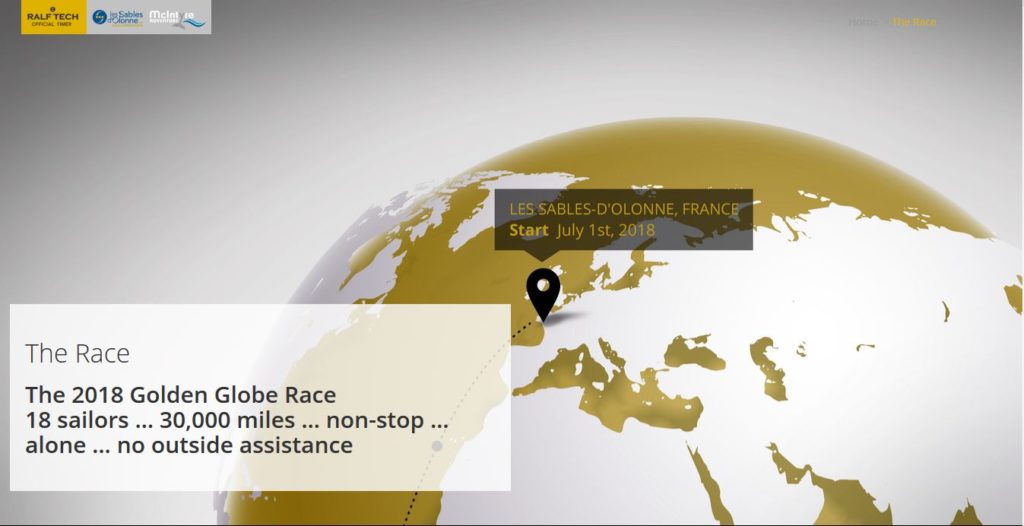
July 6th, 2018 12:00 AM. Nabil making progress and his daily texts reflect a state of good humor Nabil has been quietly making progress since the start and no doubt getting some well-earned rest after frantic pre-start preparations. His daily texts reflect a state of good humor.
July 11th, 2018 12:00 AM. Nabil presses on steadily. He reports trolling a line for fish but sadly caught a bird. Luckily, he manages to save the bird by clearing the hook from its mouth. We can only imagine Nabil wrestling this distressed bird and it flies free to their combined relief.
July 16th, 2018 12:00 AM. Liberty II showed off her classic lines as she sailed around the bottom of Lanzarote in the Canary Islands. Nabil was happy and relaxed onboard. A day after leaving the film drop however, he reported a crack in a weld on the wind vane self-steering system and was going to return to the Canary Islands to repair it. Then he lay ahull and effected a repair, but it wasn’t long before he reported that it “fell into two pieces”. He then lashed it together but with the high loads in a wind vane self-steering unit, it’s a hard thing to fix. A 100 mile beat upwind into 30 knots is not likely to be fun especially if he must hand steer. Days of pain ahead for Nabil.

